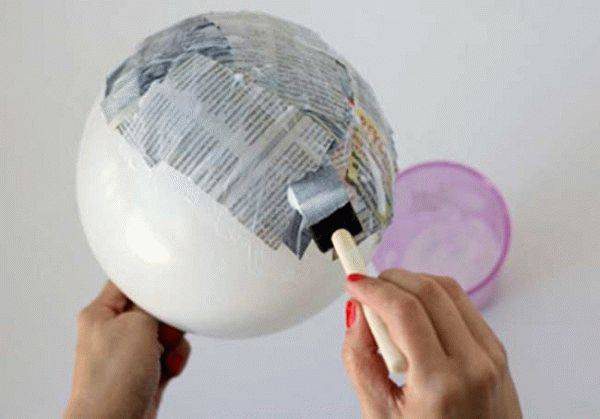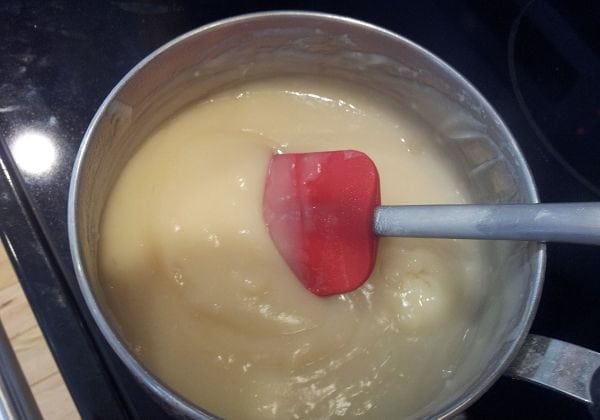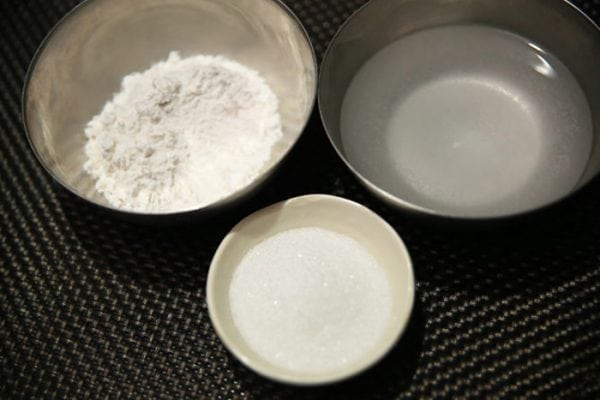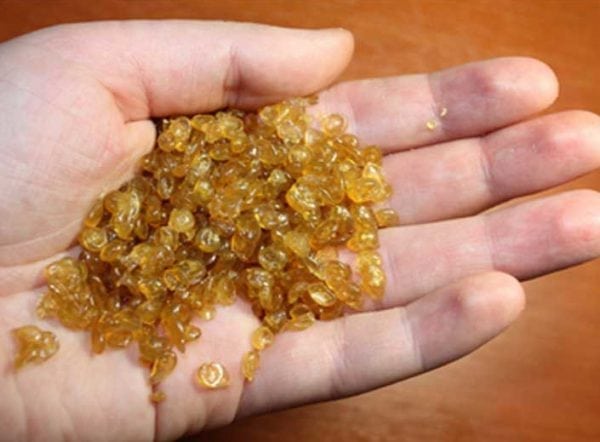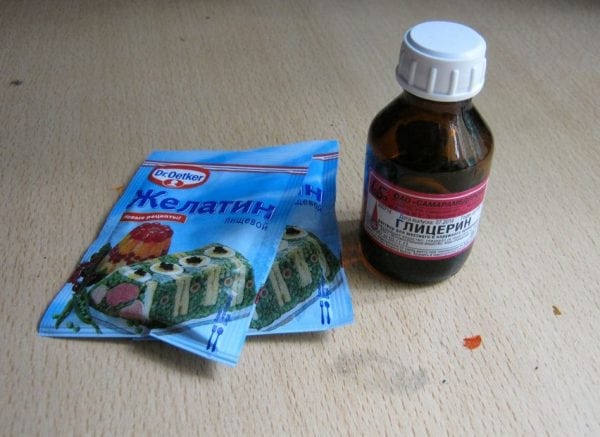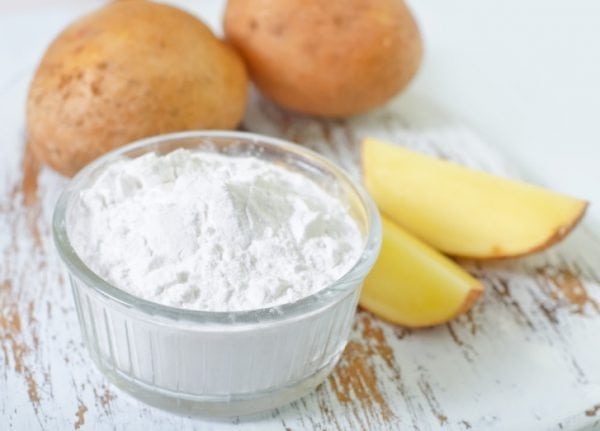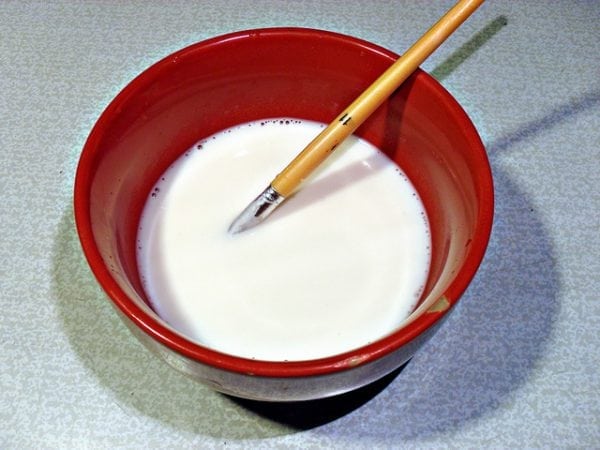To wallpaper the walls, glue is required. In construction stores, there is a wide variety of them, but the cost of quality is quite high. It is quite possible to save on glue, because many people brew the composition with their own hands at home. It is best to figure out how to make a paste - it is he who perfectly attaches the wallpaper and connects some other products.
- Application, advantages and disadvantages of paste
- Types of pastes and recipes
- From flour
- From starch
- Dextrin glue
- Paste storage

Application, advantages and disadvantages of paste
Under the paste understand the adhesive composition, which should be cooked on the basis of starch, flour with the addition of water. All components are available, are cheap, and also natural. They are not harmful to children and adults, they are not dangerous for allergy sufferers - even after tasting the glue, the baby will not recover. The paste is not only suitable for wallpaper, it is widely used for crafts:
- papier mache;
- pinyaty (a kind of papier-mâché);
- cotton toys;
- children's applications;
- other works with paper, cotton, natural material;
- scrapbooking;
- decoupage;
- articles of thread, fabric;
- artificial flowers.
With the help of a paste, librarians glue book bindings. In gardening, they are greased with strips of paper, which are sprinkled with seeds, and then laid in the ground. In repair work, the tool is used for sealing windows, closing cracks in a tree. If you dilute the thick glue with water, it will make an excellent primer. As for wallpaper, the solution will perfectly retain even the heaviest coating.
What are the other benefits of gelatinization? Here are the benefits of using home glue:
- suitability for different surfaces in the house, even painted, impregnated with drying oil;
- lack of traces on the wallpaper with the correct application technique;
- easy removal of glue stains with inaccurate use;
- quick setting and quick drying of paintings on the walls;
- long service life - no less than store glues;
- simple removal of wallpaper if you need to replace them - you just need to sprinkle the wall with water.
to contents ↑The shortcomings of the tool are few. We can only name instability to the action of water, although the addition of some components corrects this problem. Also, due to the edible composition, insect pests can settle in the glue, but proper storage eliminates the trouble.
Types of pastes and recipes
Glue should be made on the day of use - so the quality of the mixture will be ideal. Nevertheless, storing the product is permissible, but not for long - otherwise its properties are lost. The density of the material can be adjusted independently, the recipe is based on non-strict proportions. If you add flour or starch powder, the paste becomes thicker, the introduction of water will make the product more liquid. Only completely cooled solution is used, the film is preliminarily removed from its surface. Below are the basic recipes for paste.
to contents ↑From flour
It’s easiest to cook such glue from flour, because everyone has it at home. There are many options for making a paste, but in any case, the base will be flour and water. Here is the basic recipe for non-cooked wallpaper:
- take a sieve, sift the flour carefully to exclude the presence of lumps;
- measure 250 g (glass) of flour, a liter of water;
- add small amounts of hot water to wheat flour, previously brought to a boil;
- the consistency of the finished product resembles liquid sour cream;
- in too thick a solution, you can add more hot water, it must be diluted carefully so as not to make it watery.
Typically, this glue is used for thin paper wallpaper or light non-woven. Heavy material is best glued with a more reliable means. It must also be made, but after cooling, add 0.5 cups of PVA. Stir preferably with a wooden spatula.
For heavy vinyl wallpapers, there are other ways to make a paste:
- Prepare 400 g of wheat flour, a liter of cold water. Place the composition in a saucepan, cook in a water bath for a while - until small bubbles are released. The mixture is removed from the heat, filtered, removing lumps. The finished mass is flat, smooth, thicker, more reliable. It is even suitable for gluing fine ceramic tiles. Whitewashing with such a tool will help remove pollution, give a beautiful glossy look.
- Heat a liter of water, add 200 g of wheat flour (pre-dilute it with a small amount of the total). Remove from heat after boiling, cool, add 200 ml of 10% wood glue.
- Cook paste in a similar manner to the previous method, but take 350 g of flour, 20 ml of wood glue, and add 3 g of copper sulfate as an antiseptic additive.
What is liquid wood glue? The preparation formula is simple, dry powder is purchased in the store, 140 g of dry glue is added per liter of water at a temperature of 50 degrees. Typically, wood glue is used to work with dark wallpaper, PVA - with light.
For papier-mâché, you can prepare glue based on rye flour, it is more viscous. At the bottom of the pan, pour a tablespoon of the product, brew a glass of boiling water, mix well with a mixer. Add another glass of water, bring the mass to a boil. Cooking lasts no more than 20-30 seconds. The composition cools, is used for crafts within 48 hours.
Another recipe for papier-mâché, it allows you to cook a thicker composition:
- pour a glass of sifted flour with the same amount of cold water;
- stir until smooth;
- pour half a teaspoon of salt;
- boil 2 cups of water separately, pour glue;
- cook for 5 minutes, cool.
For fabric crafts use additional components - sugar, vanillin. Prepare them in the following proportions: 2 cups of cold water, 2 tablespoons of flour, a teaspoon of sugar, a pinch of vanillin. Combine the solids and a little water, beat, pour boiling water (the remaining portion), cook for 2 minutes until thick. For the manufacture of the strongest paste, the recipe is as follows:
- 5 g of gelatin pour 200 ml of water, stand for a day;
- pour 850 ml of water into the pan, put in a water bath, add gelatin;
- 150 g of flour diluted with 150 ml of water, eliminate lumps;
- pour into the general solution, let it boil, cook until smooth;
- after cooling, add 20 ml of alcohol, 4 ml of glycerol.
Such a tool will make crafts very durable, they will last a long time.
to contents ↑From starch
It’s easy to make glue from potato starch. It is used if full transparency is required, for example, when gluing light, subtle wallpapers. The strength of the adhesive layer is lower than that of flour paste, starch thick, heavy wallpaper does not make sense.
The recipe for the preparation of the following:
- dilute starch 10: 1 in hot water;
- stir so that there are no lumps, the composition should become like sour cream;
- a thick solution can be diluted with boiling water.
to contents ↑To improve the quality of gluing, a little PVA is introduced into the cooled product. For dark wallpaper, carpentry glue is suitable, the composition will immediately darken.
Dextrin glue
Dextrin is understood as an ordinary paste based on starch from potatoes, corn. It is ideal for gluing paper, fabric wallpaper.In order for the dextrin starch polysaccharide to fully exhibit its properties, it is calcined on a baking sheet in the oven before being introduced into the solution. “Roasting” is carried out at maximum temperature until the starch turns brown. Then it is cooled, ground to a powder, diluted with water (100 g of powder per 250 ml of water), 30 g of sugar are added.
to contents ↑Paste storage
How long is the composition ready? The ideal option is quick use, during the day. Adding PVA, wood glue extends the properties up to 10 days. To prevent parasites from wounding up in the paste, they add copper sulfate (sold in the Gardener-gardener stores).
Any solution is stored in the refrigerator under a tight lid. But if mold appears, it's time to throw it away. Such glue can be harmful. It is easier to cook fresh in small portions, then you do not need to store it.

